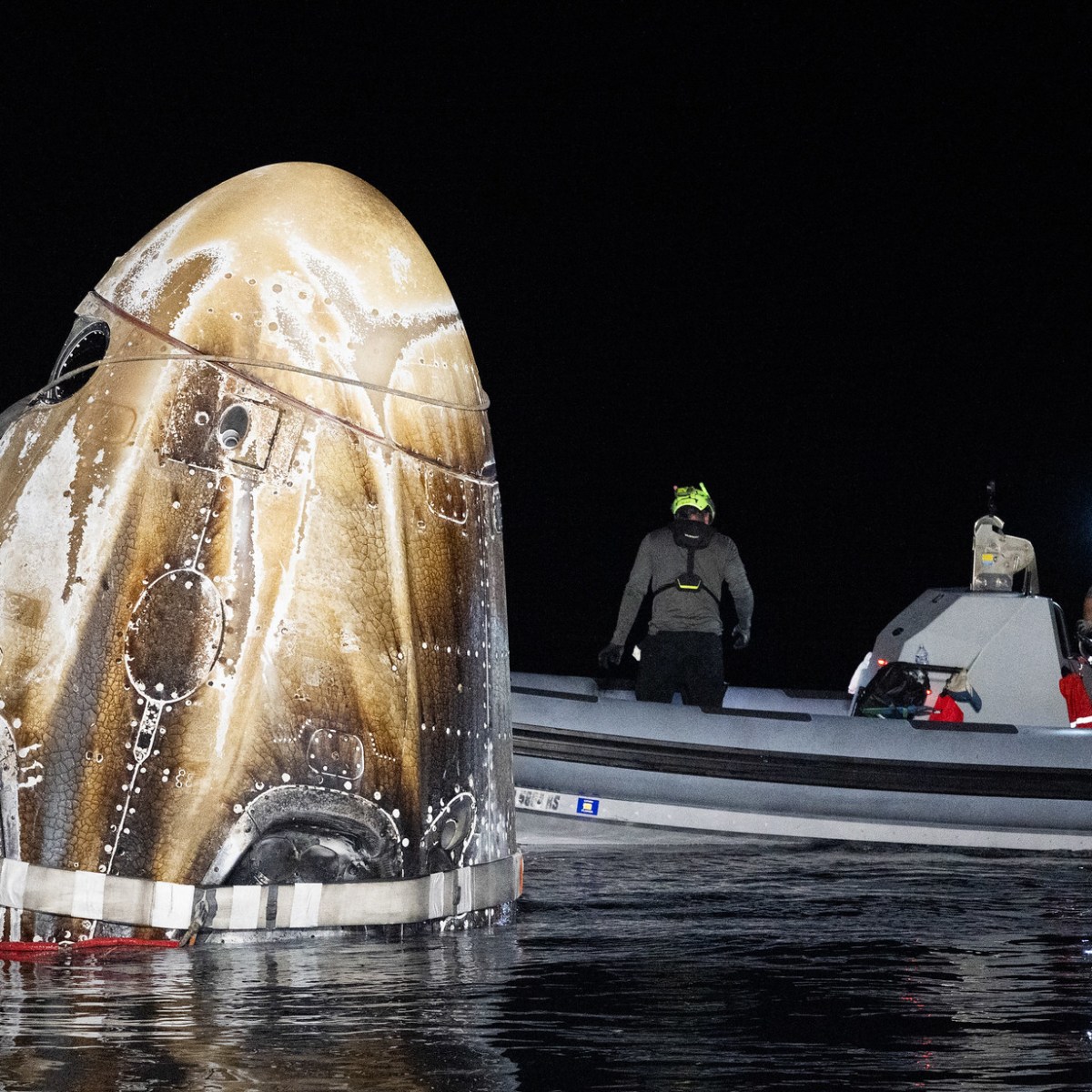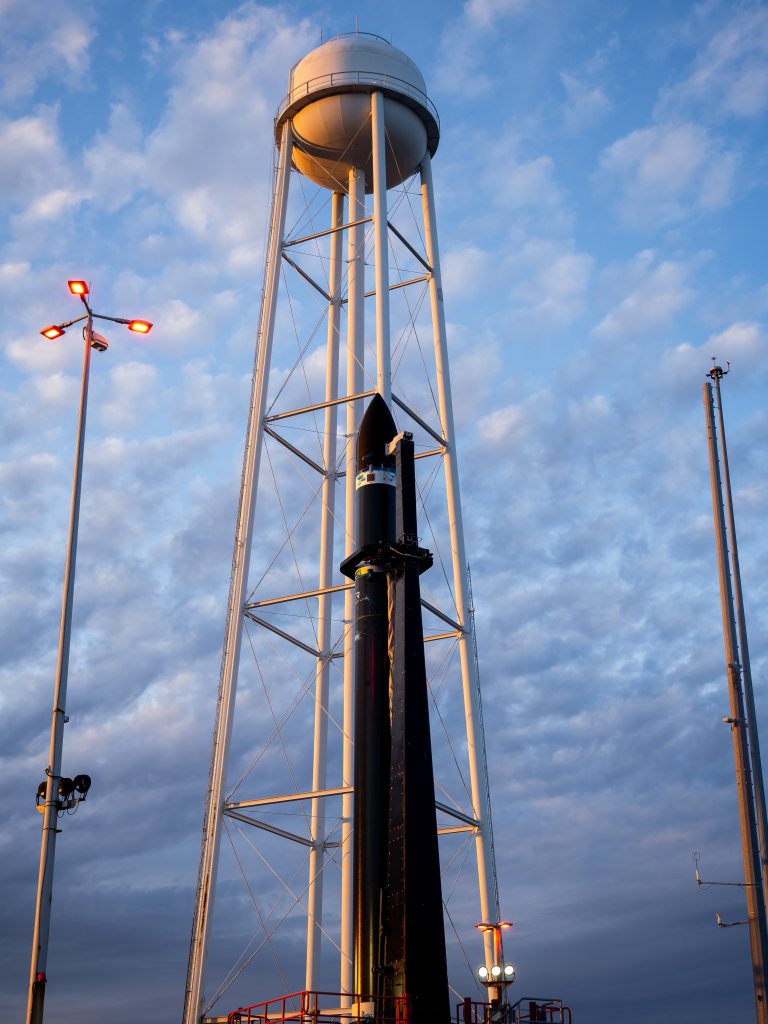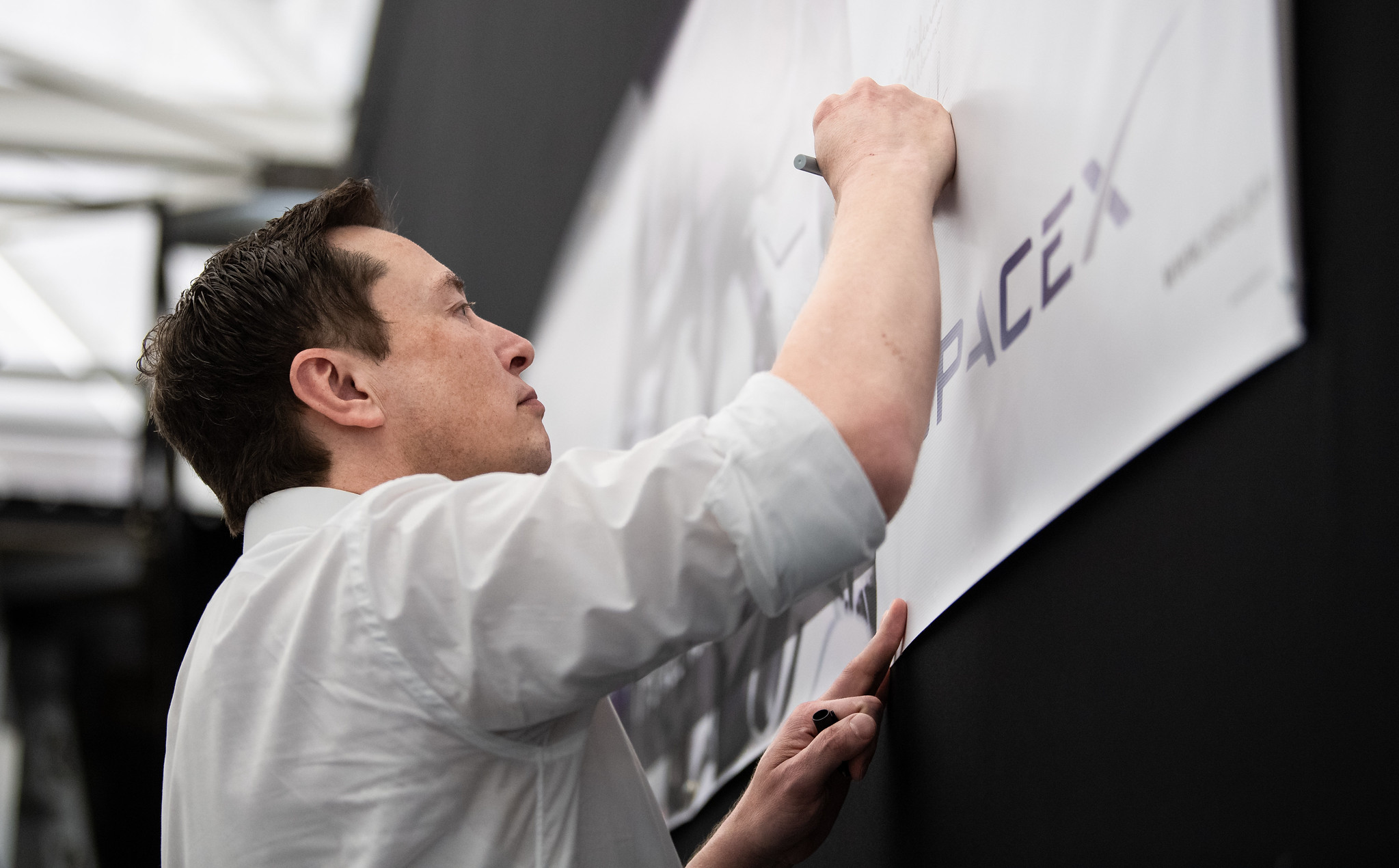Updated 8:40 a.m. Eastern about additional medical evaluations.
WASHINGTON — A Crew Dragon spacecraft successfully returned to Earth from the International Space Station early Oct. 25, wrapping up a record-setting mission.
The Crew Dragon spacecraft Endeavour splashed down in the Gulf of Mexico off the coast from Pensacola, Florida, at 3:29 a.m. Eastern. The spacecraft had undocked from the ISS at 5:05 p.m. Eastern Oct. 23.
The splashdown marked the end of the Crew-8 mission, returning NASA astronauts Matthew Dominick, Michael Barratt and Jeanette Epps and Roscosmos cosmonaut Alexander Grebenkin. The four spent 235 days in space, 232 of them on the station.
In a statement several hours after splashdown, NASA said the four had been taken to a local medical facility “for additional evaluation” separate from the standard medical evaluations done on the recovery ship. NASA did not elaborate on what prompted that evaluation, and the agency said at a post-splashdown briefing that the the crew was doing well after splashdown. NASA added in its statement that “out of an abundance of caution, all crew members were flown to the facility together.”
That 235-day mission is a record for the longest flight of an American crewed spacecraft. Crew-8 set that record first because a delay of more than a month in the launch of Crew-9, which gave NASA time to evaluate what to do with Boeing’s CST-100 Starliner spacecraft that flew to the station on a crewed test flight. NASA decided to bring Starliner back without a crew and launch just two people on Crew-9 to free up seats for Starliner astronauts Butch Wilmore and Suni Williams.
Crew-9 launched Sept. 28 and arrived at the station a day later. NASA planned what Richard Jones, deputy manager of NASA’s Commercial Crew Program, called an “extended handover” between Crew-8 and Crew-9 to give astronauts time to remove temporary seating arrangements for Wilmore and Williams in Endeavour had there been a need to evacuate the station.
“That extra time that we spent in that handover was unfortunate from a weather perspective,” he said at a post-splashdown briefing, because by the time Endeavour was ready to return, Hurricane Milton was in the Gulf, delaying the spacecraft’s return. That storm, followed by a persistent high-pressure system that kicked up winds over splashdown locations on the Gulf and Atlantic coasts of Florida, ended up delaying the return by nearly three weeks.
There was nothing that NASA and SpaceX could do but wait for conditions to improve. “There’s no lessons learned from that perspective. You just have to wait for that good weather to show up,” he said, noting such delays could be expected during this time of year, near the peak of the Atlantic hurricane season. “In this timeframe, we can expect some extended stays from that perspective.”
NASA and SpaceX announced earlier this year that SpaceX will move Dragon splashdowns to off the California coast in 2025, a move intended to allow a change in reentry procedures to ensure the Dragon’s trunk section burns up over the ocean after several trunks reentered over land, with fragments reaching the ground. SpaceX noted that the change should allow better weather for splashdowns as well.
Bill Gerstenmaier, SpaceX vice president for build and flight reliability, said at the briefing that the company was planning to start West Coast splashdowns in early 2025. “When we make that move, the intent will be to stay on the West Coast for recovery and move activities there,” he said.
The extended stay in orbit presented no problems for Crew Dragon itself, he said. NASA had initially certified Crew Dragon for 210 days in space but extended that by 30 days to accommodate the delays in the Crew-8 return.
“In terms of capability on orbit, this vehicle did extremely well with its 235 days in space,” he said. “I think we could easily extend that quite a bit more. We don’t see a lifetime issue with that.” He said later in the briefing that SpaceX will consider working with NASA to formally certify a Crew Dragon orbit lifetime of more than 235 days.
With the departure of Crew-8, the ISS back to its normal seven-person crew for the first time since Williams and Wilmore arrived at the station on Starliner in early June. The station still has “good reserves” of food and other consumables, said Bill Spetch, NASA ISS operations and integration manager, with some additional supplies flown to the station in August on the NG-21 Cygnus cargo mission.
Before the weather-related delays in Crew-8’s return, NASA also added supplies to the next cargo Dragon mission, SpX-31, now scheduled to launch no earlier than Nov. 4. “We have a couple of specific things that the crew requested that they were getting low on that we’re going to send up on SpX-31,” he said, “but we didn’t have to displace anything for that.”



